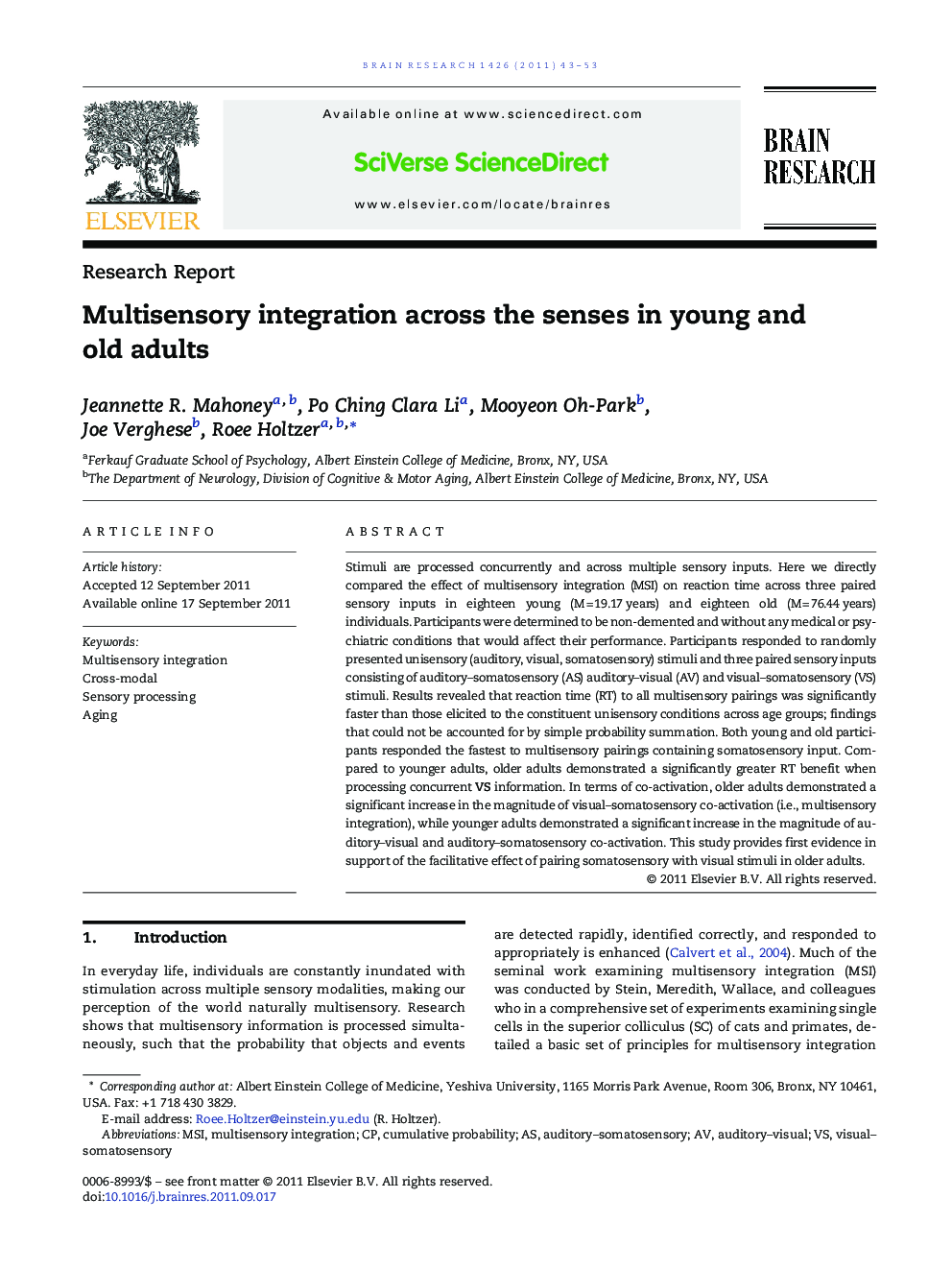| کد مقاله | کد نشریه | سال انتشار | مقاله انگلیسی | نسخه تمام متن |
|---|---|---|---|---|
| 6264714 | 1614013 | 2011 | 11 صفحه PDF | دانلود رایگان |

Stimuli are processed concurrently and across multiple sensory inputs. Here we directly compared the effect of multisensory integration (MSI) on reaction time across three paired sensory inputs in eighteen young (MÂ =Â 19.17Â years) and eighteen old (MÂ =Â 76.44Â years) individuals. Participants were determined to be non-demented and without any medical or psychiatric conditions that would affect their performance. Participants responded to randomly presented unisensory (auditory, visual, somatosensory) stimuli and three paired sensory inputs consisting of auditory-somatosensory (AS) auditory-visual (AV) and visual-somatosensory (VS) stimuli. Results revealed that reaction time (RT) to all multisensory pairings was significantly faster than those elicited to the constituent unisensory conditions across age groups; findings that could not be accounted for by simple probability summation. Both young and old participants responded the fastest to multisensory pairings containing somatosensory input. Compared to younger adults, older adults demonstrated a significantly greater RT benefit when processing concurrent VS information. In terms of co-activation, older adults demonstrated a significant increase in the magnitude of visual-somatosensory co-activation (i.e., multisensory integration), while younger adults demonstrated a significant increase in the magnitude of auditory-visual and auditory-somatosensory co-activation. This study provides first evidence in support of the facilitative effect of pairing somatosensory with visual stimuli in older adults.
⺠Participants were significantly faster at responding to all multisensory stimuli as compared to unisensory stimuli. ⺠RT facilitation was significantly greater in multisensory conditions containing somatosensory stimulation (i.e., AS and VS). ⺠Older adults exhibited greater reaction time facilitation as compared to younger adults in the multisensory VS condition.
Journal: Brain Research - Volume 1426, 2 December 2011, Pages 43-53